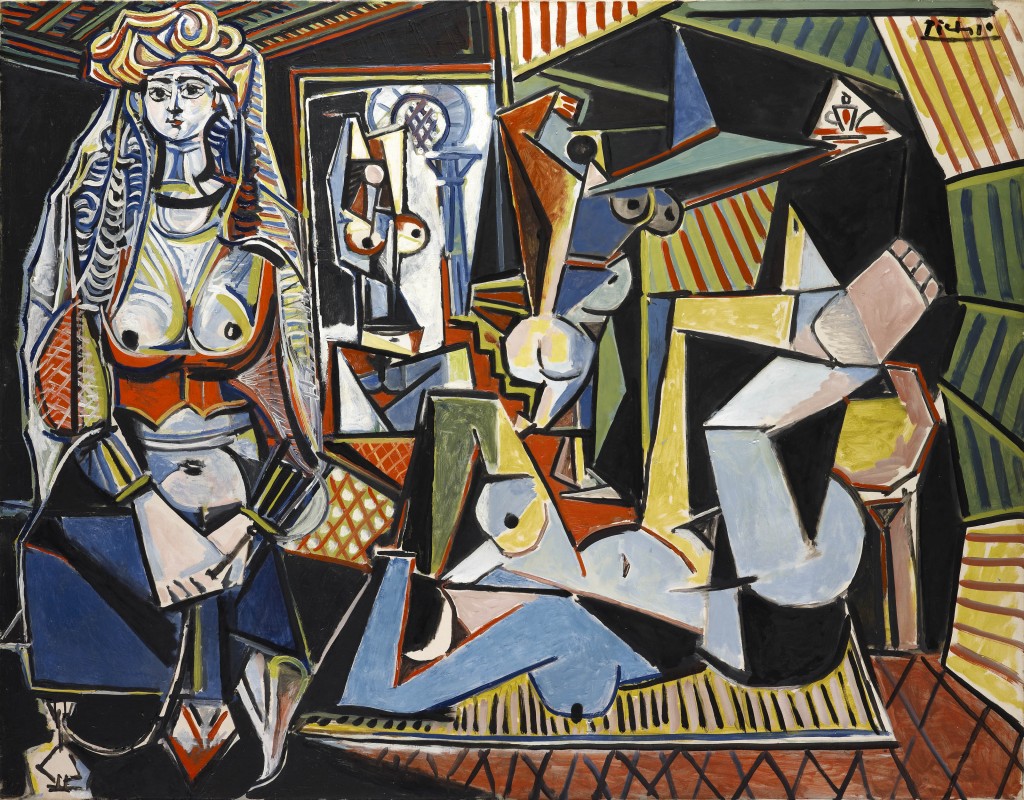If you are hoping to be floored by epic Picasso works, then this is not the show for you. This exhibition is an intelligent exploration of how Picasso facilitated moments of epiphany in Modern British Artists.
Picasso left permanent marks on every discipline he entered. “All I have ever made,” he once said, “was made for the present and in the hope that it will always remain in thepresent. When I have found something to express, I have done it without thinking of the past or the future.” British Artists saw the new languages that
Picasso opened up and used them to enrich their own art. Throughout this exhibition you learn the depths to which Picasso inspired British artists. Duncan Grant stole wallpaper from his hotel room for Picasso. Francis Bacon abandoned his work as an interior designer after seeing an exhibition of Picasso’s Dinard paintings in Paris. Nicholson explores the decorative and abstract nature of cubism after sighting a Picasso in Rosenberg’s gallery.

Hockney pays the greatest homage to Picasso. The two prints, The Student: Homage to Picasso and Artist and Modelshow his reverence for the artist after his death. In the first you see a young Hockney next to a large bust of Picasso on a plinth. In the second print, you see a naked Hockney sitting across the table from Picasso either in interview or acting as model, I am not quite sure. Picasso’s The Three Dancers finishes the exhibition. In a room of its own, with upraised arms, virulent and grotesque, this masterpiece celebrates everything this show has been about: the performance, the decorative, the merging of multiple techniques and the new language found in the breaking of reality and tradition. It’s all here, in one work, by one artist. This is the Tate Britain saying thank you to the man who inspired a century of British artists.

David Hockney PAINT TROLLEY, L.A. 1985 © David Hockney Photo Credit: STEVE OLIVER
Curated by Chris Stephens, this show visualises Picasso’s impregnation of Modern British art with a particular focus on seven key artists: Duncan Grant, Wyndham Lewis, Ben Nicholson, Henry Moore, Francis Bacon, Graham Sutherland and David
Hockney.
Picasso is undeniably a celebrity, described as the epitome of degenerate art and the archetypal modernist. He produced over 50,000 works in his lifetime. More of his paintings have been stolen than those by any other artist. Several Picasso paintings rank among the most expensive paintings in the world. Is it fair to be placing his work next those of people who were not, in some cases, even his contemporaries?
Penelope Curtis, Director of Tate Britain, describes Picasso as “the litmus test of modern art, a test that always changes.” Art critic Robert Hughes has noted that Picasso’s work expanded fractally, one image breeding new clusters of others, right up to his death. It does make sense then to have a multi-authored exhibition to reflect the interweaving of Picasso with British artists. By placing these works side by side we can see the generosity of Picasso, and the subsequent evolution in art he was able to kick-start.
 Ben Nicholson 1924 (first abstract painting, Chelsea) c.1923–4 Tate. © Angela Verren Taunt 2011. All rights reserved, DACS
Ben Nicholson 1924 (first abstract painting, Chelsea) c.1923–4 Tate. © Angela Verren Taunt 2011. All rights reserved, DACS
 Ben Nicholson 1924 (first abstract painting, Chelsea) c.1923–4 Tate. © Angela Verren Taunt 2011. All rights reserved, DACS
Ben Nicholson 1924 (first abstract painting, Chelsea) c.1923–4 Tate. © Angela Verren Taunt 2011. All rights reserved, DACS Picasso opened up and used them to enrich their own art. Throughout this exhibition you learn the depths to which Picasso inspired British artists. Duncan Grant stole wallpaper from his hotel room for Picasso. Francis Bacon abandoned his work as an interior designer after seeing an exhibition of Picasso’s Dinard paintings in Paris. Nicholson explores the decorative and abstract nature of cubism after sighting a Picasso in Rosenberg’s gallery.
Pablo Picasso The Three Dancers 1925 Tate © Succession Picasso/DACS 2011

Hockney pays the greatest homage to Picasso. The two prints, The Student: Homage to Picasso and Artist and Modelshow his reverence for the artist after his death. In the first you see a young Hockney next to a large bust of Picasso on a plinth. In the second print, you see a naked Hockney sitting across the table from Picasso either in interview or acting as model, I am not quite sure. Picasso’s The Three Dancers finishes the exhibition. In a room of its own, with upraised arms, virulent and grotesque, this masterpiece celebrates everything this show has been about: the performance, the decorative, the merging of multiple techniques and the new language found in the breaking of reality and tradition. It’s all here, in one work, by one artist. This is the Tate Britain saying thank you to the man who inspired a century of British artists.
Picasso and Modern British Art at Tate Britain, London
15th February – 15th July 2012
£14 – Free for Tate members

Pablo Picasso
Women of Algiers (Version O) 14 February 1955 European prvate collection, courtesy of Libby Howie

No comments:
Post a Comment